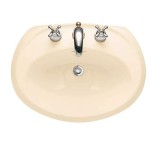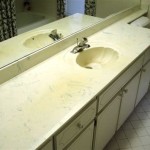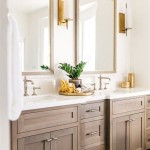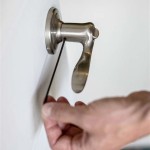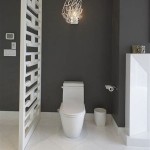Pink Bathroom Ideas: A Modern Transformation
The bathroom, often considered a purely functional space, is increasingly becoming a focal point for design expression. Color palettes, materials, and layouts are carefully considered to create an environment that is both practical and aesthetically pleasing. Among the spectrum of colors, pink, once relegated to vintage styles, is experiencing a modern resurgence. When strategically applied, pink can bring warmth, sophistication, and a unique character to a bathroom design. This article explores various ways to incorporate pink into a modern bathroom, examining different shades, materials, and design principles to achieve a balanced and contemporary aesthetic.
The key to successfully integrating pink into a modern bathroom lies in understanding its versatility. Pink is not a monolithic color; it encompasses a wide range of tones, from delicate pastels to vibrant fuchsias. The choice of shade will significantly impact the overall mood and feel of the space. Pastel pinks, for instance, tend to create a soft, calming atmosphere, ideal for relaxation and self-care. Brighter, more saturated pinks can add a playful and energetic touch, suitable for smaller bathrooms or accent walls. The careful selection of the right pink is the foundational step in designing a modern pink bathroom.
Choosing the Right Shade of Pink
The initial decision in designing a pink bathroom revolves around selecting the appropriate shade. The considerations should extend beyond personal preferences and encompass the existing architecture, available lighting, and desired ambiance. For instance, a bathroom with limited natural light may benefit from a lighter, brighter shade of pink to maximize the perceived space and brightness. Conversely, a larger bathroom with ample natural light can handle a darker or more saturated pink without feeling overwhelming.
Millennial pink, a muted, slightly dusty hue, has gained significant popularity in recent years and remains a versatile choice for modern bathrooms. Its understated elegance pairs well with a variety of materials, including marble, concrete, and brass. This shade provides a sophisticated and contemporary look, avoiding the saccharine sweetness often associated with traditional pink bathrooms. Blush pink, another popular option, offers a similar level of sophistication with a slightly warmer undertone. It complements natural wood tones and creates a welcoming and inviting atmosphere.
For those seeking a bolder statement, consider incorporating more vibrant shades of pink, such as fuchsia or magenta. However, these colors should be used sparingly to avoid overpowering the space. Accent walls, decorative tiles, or accessories in these vibrant hues can add a pop of color and create visual interest. It is generally advisable to balance these bolder shades with neutral elements, such as white or gray, to maintain a sense of balance and sophistication.
Testing paint swatches in the actual bathroom environment is crucial before committing to a particular shade. The color will appear different under varying lighting conditions, and observing the swatches throughout the day will provide a more accurate representation of the final result. Furthermore, consider the undertones of the pink and how they interact with the existing colors in the bathroom. Some pinks have cool undertones, while others have warm undertones, and selecting a shade that complements the other elements is essential for a cohesive design.
Incorporating Pink Through Materials and Textures
Beyond paint, pink can be incorporated into a modern bathroom through a variety of materials and textures. This approach adds depth and dimension to the design, creating a more visually engaging and tactile experience. Tiles, countertops, and accessories offer opportunities to introduce pink in subtle or dramatic ways.
Pink tiles, particularly in geometric patterns or unique shapes, can create a striking focal point. Subway tiles in a pastel pink shade offer a classic yet contemporary look, while hexagonal or mosaic tiles in varying shades of pink can add a touch of playfulness and visual interest. Consider using pink tiles for the shower enclosure, backsplash, or accent wall to create a cohesive and stylish design. The choice of grout color can also significantly impact the overall aesthetic. A light gray grout will complement the pink tiles and create a clean, modern look, while a darker grout can provide more definition and contrast.
Pink marble or quartz countertops can add a luxurious touch to the bathroom. These materials offer a natural variation in color and pattern, creating a unique and sophisticated look. The veining and texture of the stone add depth and dimension to the design, while the pink hue brings warmth and elegance to the space. Pair these countertops with white or brass fixtures for a classic and timeless aesthetic. Furthermore, pink concrete can be used for sinks or countertops, providing a more modern and industrial feel.
Accessories provide another avenue for incorporating pink into the bathroom. Towels, bath mats, shower curtains, and decorative items in varying shades of pink can add pops of color and create a cohesive design. Consider using different textures, such as plush towels or woven baskets, to add depth and dimension to the space. Pink plants, such as orchids or bromeliads, can also add a natural touch and complement the overall color scheme. The key is to avoid overdoing it and to balance the pink accents with neutral elements to maintain a sense of balance and sophistication.
The texture of the materials plays an important role. Matte finishes tend to soften the pink, making it appear more muted and subtle, while glossy finishes can enhance the color and create a more vibrant look. Consider the overall desired mood and feel of the bathroom when selecting materials and finishes. A matte tile in a pastel pink shade, for example, will create a more relaxing and calming atmosphere than a glossy tile in a bright fuchsia hue.
Balancing Pink with Neutral Elements and Metallics
To prevent a pink bathroom from appearing overly saccharine or dated, it is crucial to balance the color with neutral elements and metallic accents. These elements can provide contrast, add sophistication, and create a more balanced and contemporary design. White, gray, and natural wood tones are excellent choices for neutralizing the pink and creating a harmonious color palette.
White is a classic and versatile choice that complements pink beautifully. White walls, fixtures, and countertops can provide a clean and crisp backdrop for the pink elements, allowing them to stand out without overpowering the space. White also helps to reflect light, making the bathroom feel brighter and more spacious. Consider using different shades of white, such as warm white or off-white, to add depth and dimension to the design. A warm white, for example, will complement the warmth of a blush pink, while a crisp white will create a more modern and contemporary look.
Gray is another excellent choice for neutralizing pink. Light gray walls or tiles can provide a sophisticated and understated backdrop for the pink elements, while dark gray accents can add depth and contrast to the design. Gray also complements a variety of materials, including marble, concrete, and brass. Consider using different textures of gray, such as a textured gray tile or a soft gray rug, to add visual interest to the space.
Natural wood tones can add warmth and character to a pink bathroom. Wood vanities, shelving, or flooring can provide a natural contrast to the pink elements, creating a more inviting and organic feel. Consider using different types of wood, such as light oak or dark walnut, to achieve different effects. Light oak will create a brighter and more airy feel, while dark walnut will add a touch of sophistication and drama. The natural texture of the wood also adds depth and dimension to the design.
Metallic accents, such as brass, gold, or copper, can add a touch of luxury and sophistication to a pink bathroom. These metals complement pink beautifully and can be used for fixtures, hardware, or accessories. Brushed brass, in particular, is a popular choice for modern bathrooms. The warm tones of the brass complement the pink and create a luxurious and inviting feel. Polished chrome or nickel can also be used, but they tend to create a cooler and more contemporary look. Consider the overall desired mood and feel of the bathroom when selecting metallic accents.
The interplay between the pink, neutral elements, and metallic accents is crucial for creating a balanced and harmonious design. By carefully considering the proportions and placement of these elements, it is possible to create a pink bathroom that is both stylish and sophisticated. The goal is to create a space that feels inviting, relaxing, and reflects the individual's personal style.

Sweet Pink Grey Room With Bath And Wardrobe Bathroom Interior Design Luxury Modern

Modern Pink Bathroom Ideas For Urban Homes Designcafe

6 Pink Bathrooms That Will Make You Wish For Spring To Come Faster Daily Dream Deco Diseño De Interiores Baño Baños Decoracion Modernos

Bathroom Ideas 18 Pink Bathrooms Design

84 Lovely And Cute Pink Bathroom Decor Ideas Digsdigs
45 Creative Small Bathroom Ideas And Designs Renoguide N Renovation Inspiration

Pink Bathroom Tile Homedesign Bathroomideas Interior Design Tiles

34 Prettiest Pink Bathroom Ideas That Symbolizes Love Homemydesign

51 Pink Bathrooms With Tips Photos And Accessories To Help You Decorate Yours Bathroom Interior Design Modern

12 Elegant Pink Bathrooms Bathroom Ideas 2024
Related Posts

